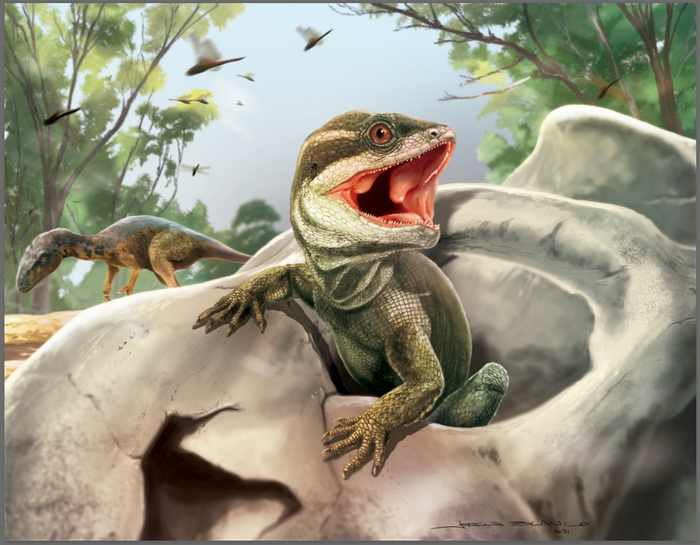The Independent's journalism is supported by our readers. When you purchase through links on our site, we may earn commission.
Scientists find fossil species that is ancient forerunner of most modern reptiles
Taytalura is the most primitive member of a lineage that eventually originated all lizards and snakes

Scientists have unearthed the 231-million-year-old fossil of a species that is an ancient forerunner of most modern reptiles.
According to the researchers, including those from Harvard University in the US, the fossil, unearthed in Argentina, represents an ancient species that was an ancestor to Lepidosauria – a group that includes all lizards and snakes – and is the largest group of terrestrial vertebrates with approximately 11,000 species.
While the lineages of Lepidosauria are older than dinosaurs, originating and diverging from each other around 260 million years ago, the scientists say the early phase of this group’s evolution, about 260-150 million years ago, has remained a mystery, marked by very fragmented fossils – until now.
In the current research, published Wednesday in the journal Nature, the scientists describe a new species that represents the most primitive member of lepidosaurs, Taytalura alcoberi , based on the first three-dimensionally preserved early lepidosaur fossil.
“I knew the age and locality of the fossil and could tell by examining some of its external features that it was closely related to lizards, but it looked more primitive than a true lizard and that is something quite special,” Dr Tiago R Simoes, a co-author of the study from Harvard University, said in a statement.
In the research, the scientists processed data from the fossil specimen’s CT X-ray scans and created a mosaic of colours for each bone of the skull.
They say this allowed them to understand the fossil’s anatomy in high-detail resolution on a scale of only a few micrometers – about the same thickness as a human hair.
On further analysis, they found that Taytalura is the most primitive member of the lineage that eventually originated all lizards and snakes.
“It’s not even a lizard in the evolutionary tree,” Dr Simoes said, adding that, “it’s the very next thing there,” between true lizards, all other reptiles, and the last remaining species of tuatara in New Zealand.
“This beautifully 3D preserved fossil is really an important finding. It is the most complete fossil representing the early stages of lepidosaur evolution that we have so far,” Gabriela Sobral, another co-author of the study from the State Museum of Natural History in Stuttgart, Germany, said in a statement.
“All other known fossils are too incomplete, which makes it difficult to classify them for sure, but the complete and articulated nature of Taytalura makes its relationships much more certain,” Dr Gabriela added.
While the perfectly preserved Taytalura skull reveals how a very successful group of animals, including more than 10,000 species of snakes, lizards, and tuataras, originated, scientists say it also highlights the importance of the fossil site of Ischigualasto Formation where some of the most primitive dinosaur specimen have been unearthed.
“The extraordinary quality of preservation of the fossils at this site allowed something as fragile and tiny as this specimen to be preserved for 231 million years,” Dr Ricardo N. Martínez, a co-author of the study from The National University of San Juan, said in a statement.
While almost all fossils of lepidosaurs from this Triassic period – 252-201 million years ago – is found in Europe, the researchers say this is the first fossil of an early lepidosaur found in South America, suggesting the creatures in this group were able to migrate across vastly distant geographic regions even early in their evolutionary history.
The researchers plan to next explore older sites in hopes of finding different species from the same lineage that branch just before the origin of true lizards.
This article was amended on 1 September 2021 as the original incorrectly referred to the 231-year-old fossil. The word ‘million’ was missing, and we are happy to set the record straight.
Join our commenting forum
Join thought-provoking conversations, follow other Independent readers and see their replies
Comments
Bookmark popover
Removed from bookmarks